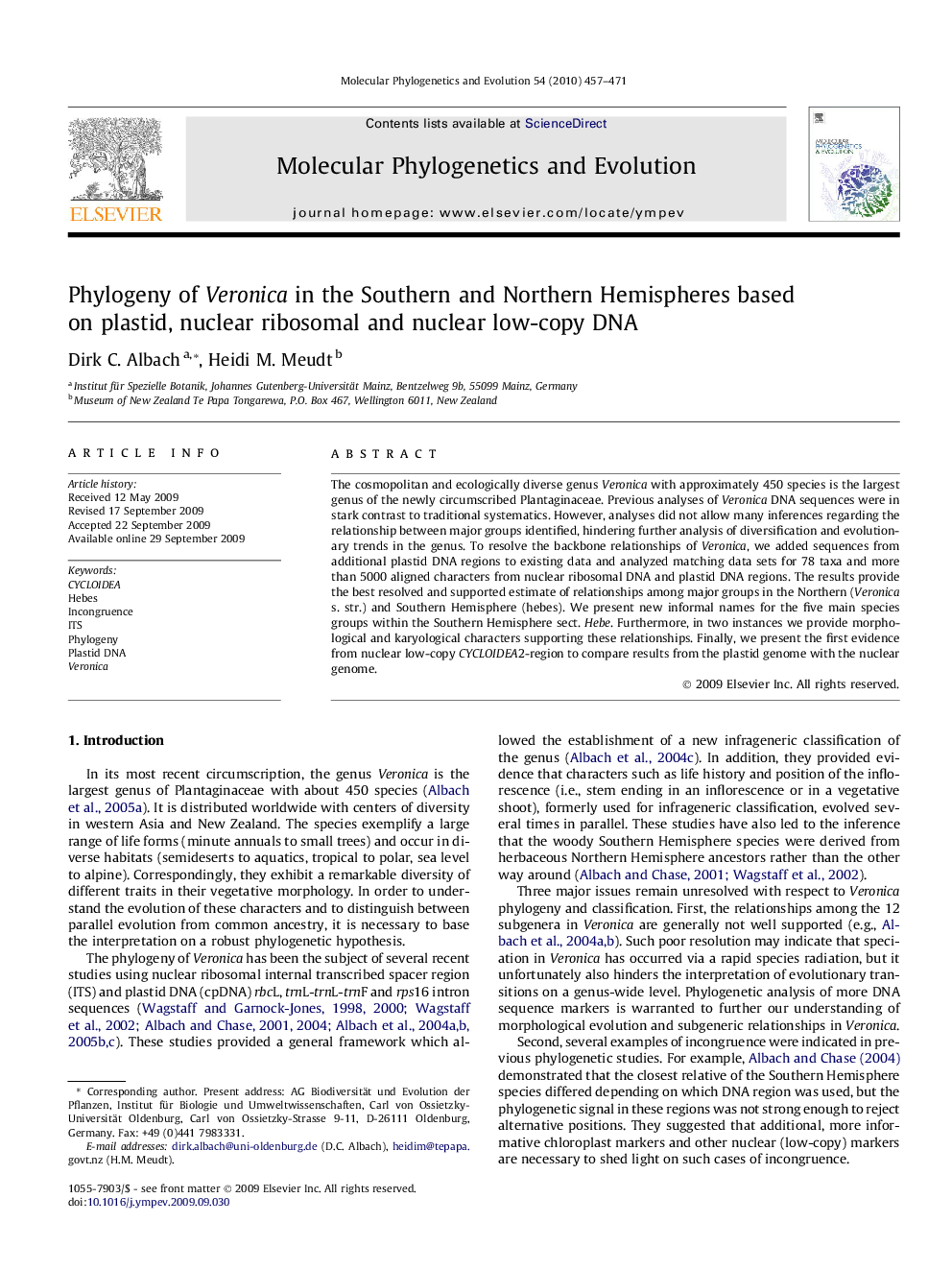| Article ID | Journal | Published Year | Pages | File Type |
|---|---|---|---|---|
| 2834630 | Molecular Phylogenetics and Evolution | 2010 | 15 Pages |
The cosmopolitan and ecologically diverse genus Veronica with approximately 450 species is the largest genus of the newly circumscribed Plantaginaceae. Previous analyses of Veronica DNA sequences were in stark contrast to traditional systematics. However, analyses did not allow many inferences regarding the relationship between major groups identified, hindering further analysis of diversification and evolutionary trends in the genus. To resolve the backbone relationships of Veronica, we added sequences from additional plastid DNA regions to existing data and analyzed matching data sets for 78 taxa and more than 5000 aligned characters from nuclear ribosomal DNA and plastid DNA regions. The results provide the best resolved and supported estimate of relationships among major groups in the Northern (Veronica s. str.) and Southern Hemisphere (hebes). We present new informal names for the five main species groups within the Southern Hemisphere sect. Hebe. Furthermore, in two instances we provide morphological and karyological characters supporting these relationships. Finally, we present the first evidence from nuclear low-copy CYCLOIDEA2-region to compare results from the plastid genome with the nuclear genome.
